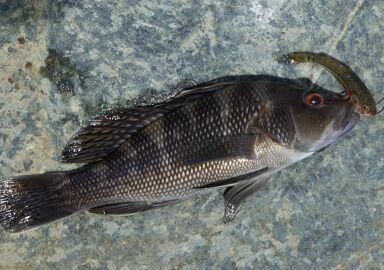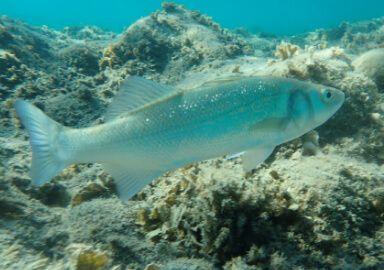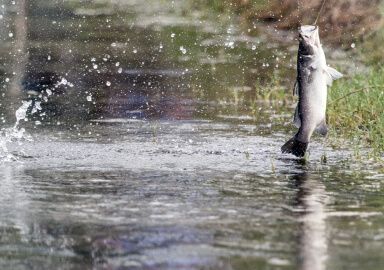Seabass
Seabass is a popular common name for many species of bass-sized and shaped saltwater fish, including but not limited to European and black seabass.
View 47 listings
47
listings
–
price starting from
12
countries
Where and When?
The European and the black seabass are found in the Atlantic Ocean. The former, true to its name, inhabits the coastal waters of Western Europe and Africa, from Norway to Senegal, and also in the Mediterranean and the Black Seas. The latter migrates along the eastern coast of North America, moving northwards to the Carolinas in the summer and returning to winter in the warm waters of Florida. Both are typical offshore fishing, and never found deep in the ocean. They like to hang around near various structures, such as reefs and wrecks, and the black seabass is often found in estuaries. The giant seabass inhabits the Pacific coast near California, both the US state and the Mexican Baja California; a population also exists near the shores of Japan. In the USA the giant seabass is protected, but in Mexico it’s an object of both commercial and recreational fishing.
About Seabass
More than 25 species of fish from 16 genera and 5 families are commonly called seabass. This includes fishes as diverse as the barramundi in Australia, the Patagonian toothfish in Chile, and the giant seabass (Stereolepis gigas) found in the Pacific Ocean. Most fishing trips for seabass, however, will imply catching either the European seabass (Dicentrachus labrax) or the black seabass (Centropristis striata). Most kinds of seabass have a torpedo-shaped or oblong body, with large eyes and mouth; the young and the males in the mating season can be quite bright, but mostly they have dark grey or olive color on top, and somewhat lighter-colored scales in the bottom. The European seabass, which can be as long as 1 meter (39”) and tip the scales at 12 kg (26 lbs) is bigger than the black seabass, that seldom grows longer than 66 centimeters (26”) and 4.1 kilograms (9 lbs). But the biggest of the seabass species, appropriately known as the giant seabass, had once reached 2.5 meters (8’) in length and 315 kilograms (695 lbs) in weight.
How to Catch?
Seabass, both in Europe and in North America, are popular among light tackle nearshore fishers. Both the black and the European seabass are optic predators, and under the right conditions will readily grab a lure. Both spinning and fly fishing lures can be used, although fly fishing is somewhat more challenging. Natural bait will also produce excellent results, with squid especially recommended. The advantage of these species, especially for a casual recreational angler who wants to diversify their beach vacation with a bit of fishing, is that they can be caught from the shore, although, of course, fishing from a boat will allow you to target reefs and wrecks, and in general catch bigger seabass. As for the giant seabass, it’s a true deep sea fishing species, and it’s a pity that fishing for it is currently restricted.










